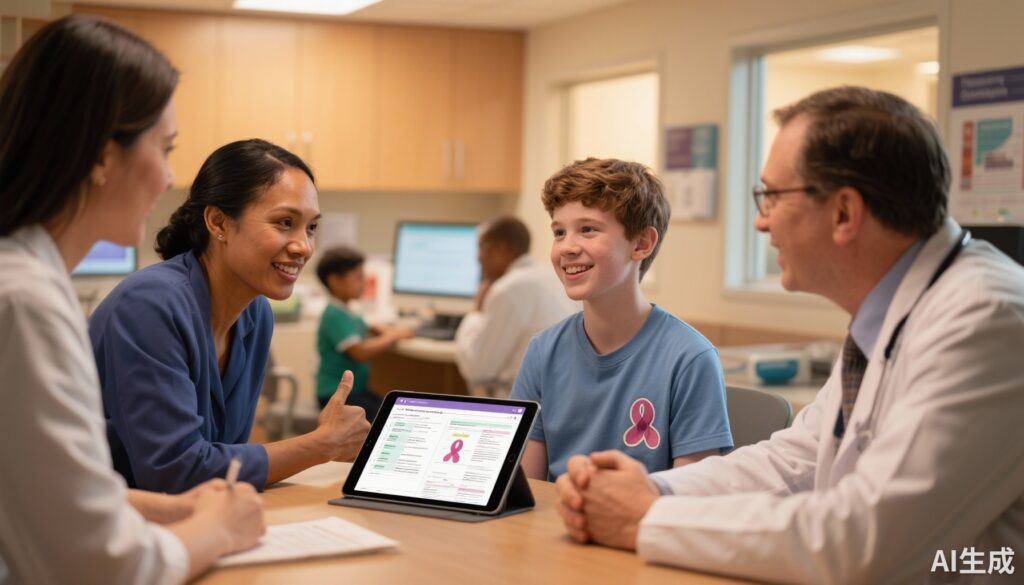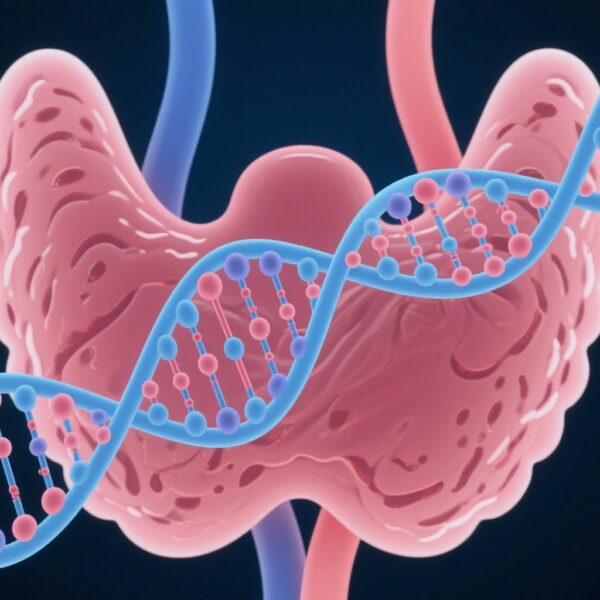Introduction and Context
Childhood and adolescent cancer survival has improved markedly over recent decades. As a result, growing numbers of survivors now face life-long risks of organ dysfunction, endocrine problems, secondary cancers, psychosocial challenges, and barriers to education, employment, and independent living. Landmark epidemiology (eg, Oeffinger et al., NEJM 2006) documented a high lifetime burden of chronic health conditions among adult survivors of childhood cancer, highlighting the need for continued, risk‑based follow‑up beyond paediatric care [1].
Yet transitions from paediatric/adolescent oncology to adult care are often fragmented. Survivors report gaps in information, unclear care responsibility, and poor access to providers knowledgeable about cancer‑related late effects. With these clinical gaps and variable practice across Europe, the EU‑CAYAS‑NET consortium convened an international, multidisciplinary guideline panel and patient representatives to produce a clinical practice guideline focused specifically on health‑care transitions for people diagnosed with cancer at ages 0–21 years. The guideline (Wams et al., Lancet Oncology 2025) synthesizes evidence spanning 1990–2025, applies GRADE methodology, and issues 44 strong recommendations to standardize and improve transitions for this vulnerable population [2].
New Guideline Highlights
Major themes and actionable points from the EU‑CAYAS‑NET recommendations:
– Start planning early: transition should be a purposeful, staged process beginning in early adolescence and individualized to the survivor’s developmental readiness and clinical risk.
– Use structured survivorship care plans (SCPs): comprehensive, portable SCPs that summarize diagnosis, treatments, risk‑based screening schedule, and self‑management guidance are central to successful transfers.
– Assign a transition coordinator: a named clinician or nurse navigator improves continuity and reduces loss to follow‑up.
– Tailor models to local systems: while multidisciplinary transition clinics are preferred when available, shared‑care and primary care‑led models are acceptable when supported by explicit protocols and specialist access.
– Embed psychosocial, fertility, educational and vocational supports: transition recommendations extend beyond medical surveillance to life course needs.
– Focus on equity and inclusion: recommendations address language, socioeconomic, and geographic barriers to ensure all survivors benefit.
Key takeaway for clinicians: the guideline reframes transition as a longitudinal, multidisciplinary, patient‑centred pathway that requires systems, documentation, and named responsibility—not just a one‑time transfer letter.
Updated Recommendations and Key Changes from Prior Guidance
How this guideline advances earlier documents (eg, IOM 2006; COG LTFU; AAP transition guidance):
– Scope and specificity: EU‑CAYAS‑NET is focused uniquely on oncology survivors diagnosed through age 21 and integrates evidence from cancer survivorship and chronic disease transitions to create oncology‑specific transition standards [2].
– Strong emphasis on survivorship care plans: while SCPs have been advocated previously, EU‑CAYAS‑NET makes SCPs a central, strongly recommended tool tied to measurable content and formats to maximize portability and usability across systems.
– Formal recommendation of a transition coordinator role: prior guidance recognized the idea; the new guideline strongly recommends a named coordinator as a minimum system standard.
– Broader psychosocial remit: explicit recommendations on education, employment, and independent living supports are more detailed than many earlier documents.
– Grading transparency with GRADE: EU‑CAYAS‑NET explicitly graded 44 strong recommendations, while representing evidence certainty (very low to moderate), helping clinicians weigh strength versus evidence quality.
Evidence driving updates: the panel used a systematic review of 2,538 citations (86 met criteria) and included data from chronic disease transition literature to fill gaps; consistent findings across settings supported the practical recommendations despite limited high‑quality RCT evidence for many system interventions.
Topic‑by‑Topic Recommendations
Below are the guideline’s core recommendation domains and practical elements. Each item shown as a strong recommendation in EU‑CAYAS‑NET unless noted; evidence quality ranges from very low to moderate [2].
1) Transition planning and timing
– Begin structured transition planning by age 12–14, with individualized pacing based on maturity, cognitive function, and clinical risk. (Strong; evidence: low)
– Define a clear transfer window; typically transfer to adult services between ages 18–25 depending on healthcare system and survivor readiness. (Strong)
2) Survivorship Care Plans (SCPs)
– Provide every survivor with a written SCP at or before transfer containing: diagnosis, treatment exposures with doses, likely late effects and risk level, recommended surveillance tests/timing, fertility information, psychosocial needs, and contact details for paediatric and adult providers. Use standardized templates and electronic formats when possible. (Strong; evidence: moderate for improved documentation and patient knowledge)
3) Care coordination and named responsibility
– Assign a transition coordinator (nurse or clinician) responsible for scheduling, communication, and ensuring SCP delivery. This role should bridge paediatric and adult teams and liaise with primary care. (Strong; evidence: low)
4) Models of care
– Multidisciplinary transitional clinics (paediatric and adult specialists together) are preferred when feasible. Where clinics are not possible, structured shared‑care models between specialists and primary care, with rapid pathways to specialist re‑referral, are acceptable. (Strong)
5) Risk‑based surveillance and long‑term follow‑up
– Transfer recipients must follow risk‑based surveillance akin to COG LTFU and other established survivorship protocols, with clear local referral pathways for abnormal results. (Strong; evidence: moderate for surveillance effectiveness in detecting late effects)
6) Psychosocial, educational, and vocational support
– Screen for mental health, neurocognitive, and social needs during transition and provide or link to appropriate services (psychology, neuropsychology, social work, educational/vocational counseling). (Strong)
7) Fertility and sexual health
– Discuss fertility risks and options early; ensure fertility preservation discussions are documented in SCPs and that adult reproductive services are accessible after transfer. (Strong)
8) Primary care engagement
– Actively involve primary care physicians (PCPs) in transition planning; provide PCPs with SCPs and clear guidance about surveillance responsibilities and when to refer to specialists. (Strong)
9) Communication and health literacy
– Use age‑appropriate education, teach self‑management skills, and ensure survivors have access to electronic records or patient portals. Offer interpreter services and materials in appropriate languages. (Strong)
10) Special populations
– Adapt transition timing and supports for survivors with cognitive impairment, complex health care needs, social vulnerabilities, or those in low‑resource settings; multidisciplinary planning must include guardians and community resources. (Strong)
11) Quality metrics and audit
– Monitor transition outcomes: rates of successful transfer, retention in adult care, adherence to surveillance, patient‑reported outcomes (quality of life, satisfaction), and equity metrics. Use audits to drive improvement. (Strong)
Recommendation Grades: Quick Reference
EU‑CAYAS‑NET issued 44 strong recommendations. Evidence certainty across recommendations was reported as: very low, low, or moderate. The guideline emphasizes that a strong recommendation reflects panel consensus that benefits outweigh harms and that the recommendation should be applied in most settings even when evidence certainty is limited.
Expert Commentary and Insights
The guideline panel combined clinical, nursing, psychosocial, primary care, and patient‑representative inputs. Key expert perspectives included:
– Consensus on the primacy of SCPs and named transition coordinators as practical, implementable steps likely to yield immediate benefits even with limited RCT evidence.
– Recognition of the tension between ideal models (multidisciplinary transition clinics) and real‑world constraints; the panel stressed pragmatic, scalable alternatives—clear protocols for shared care and digital tools to support PCPs.
– Strong advocacy for embedding social determinants of health and equity into transition planning; experts noted survivors from disadvantaged backgrounds are at higher risk of being lost to follow‑up.
– Concern about workforce readiness: adult clinicians often report insufficient training in late effects of paediatric cancer. The guideline encourages adult provider education and availability of specialist consultation.
Controversies and research priorities highlighted by the panel:
– Optimal age for transfer remains debated; the guideline supports individualized timing and calls for trials and cohort studies comparing age‑based vs. readiness‑based transfer.
– Which transition model yields the best long‑term health and economic outcomes is unclear; implementation research is needed to compare multidisciplinary clinics, shared care, and primary‑care‑led pathways.
– Technology’s role (telemedicine, electronic SCPs, interoperability) has promise but needs evaluation for effectiveness and equity impacts.
Practical Implications for Clinicians and Health Systems
Actionable steps to implement the recommendations:
– Establish or adopt a standardized SCP template and ensure every survivor has one before transfer.
– Create a job description and funding stream for a transition coordinator; where resources are scant, designate an existing staff member with protected time.
– Build clear referral pathways and rapid re‑access policies so adult providers can re‑engage specialist care when new late effects appear.
– Educate primary care colleagues about late‑effect risks and surveillance protocols; consider short orientation sessions and summary sheets tailored to PCPs.
– Incorporate transition metrics into quality improvement plans and national cancer survivorship registries where available.
Financial and system considerations: the guideline recognizes that implementing multidisciplinary clinics and dedicated coordinators requires investment; however, panelists argued that preventing loss to follow‑up and late complications may reduce downstream costs and improve life‑course outcomes.
Patient Vignette
Emily, age 17, treated at age 5 for ALL with cranial irradiation and anthracycline chemotherapy, is preparing to leave paediatric oncology. Under EU‑CAYAS‑NET recommendations, her team begins structured transition planning at 14: a SCP is produced listing her exposures and risk for cardiomyopathy and neurocognitive late effects, a transition coordinator schedules a joint paediatric‑adult clinic visit at 18, and her PCP receives the SCP plus a clear surveillance schedule for echocardiography and cognitive screening. Emily receives counseling about fertility, vocational support to plan for university, and mental health screening. After transfer, she remains on a shared‑care pathway with annual cardiology review and rapid access back to oncology survivorship services if problems emerge.
Future Directions and Research Needs
EU‑CAYAS‑NET identifies multiple evidence gaps that warrant research investment:
– Comparative effectiveness of transition models on long‑term morbidity, mortality, and psychosocial outcomes.
– Impact of SCP formats (paper vs. electronic vs. integrated EHR) on retention and care quality.
– Cost‑effectiveness analyses of transition coordinators and multidisciplinary clinics across varied health systems.
– Interventions to reduce disparities in transition success among socioeconomically disadvantaged and minority survivors.
References
1. Oeffinger KC, Mertens AC, Sklar CA, et al. Chronic health conditions in adult survivors of childhood cancer. N Engl J Med. 2006;355(15):1572–1582.
2. Wams J, van Dalen EC, den Hartogh JG, et al.; EU–CAYAS–NET consortium. Health‑care transitions for young people living beyond childhood and adolescent cancer: recommendations from the EU‑CAYAS‑NET consortium. Lancet Oncol. 2025 Oct;26(10):e525‑e535. doi:10.1016/S1470‑2045(25)00410‑3. PMID: 41038201.
3. Institute of Medicine (US) and National Research Council (US) Committee on Cancer Survivorship: Improving Care and Quality of Life. From Cancer Patient to Cancer Survivor: Lost in Transition. Washington (DC): National Academies Press (US); 2006.
4. Children’s Oncology Group. Long‑Term Follow‑Up Guidelines for Survivors of Childhood, Adolescent, and Young Adult Cancers (Version 5.0). Available at: https://www.ccss.org/ or https://survivorshipguidelines.org (accessed 2025).
5. American Academy of Pediatrics; American Academy of Family Physicians; American College of Physicians. Supporting the health care transition from adolescence to adulthood in the medical home. Pediatrics. 2011;128(1):182–200.
6. National Comprehensive Cancer Network. NCCN Clinical Practice Guidelines in Oncology: Survivorship. Version 2.2024. Fort Washington, PA: NCCN; 2024.
Closing
The EU‑CAYAS‑NET guideline sets a new European standard for transitions of childhood and adolescent cancer survivors, emphasizing planned, documented, and person‑centred care that spans medical surveillance and life course supports. Implementation will require system investment, workforce training, and measurement, but the guidance gives clinicians and policymakers clear, evidence‑informed steps to reduce gaps and improve long‑term outcomes for survivors.


